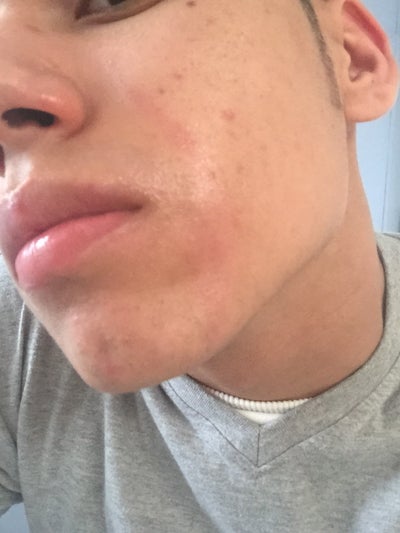

- 1ST DEGREE BURN ON FACE SKIN
- 1ST DEGREE BURN ON FACE FULL
- 1ST DEGREE BURN ON FACE PROFESSIONAL
What are the symptoms of a burn or scald?Ī superficial burn, also known as a first-degree burn, affects the outer or top layer of skin only.
Don’t use any ointments, creams, lotions or fat on a burn. If blisters develop don’t pop them, and visit your doctor in case they need to be removed. 1ST DEGREE BURN ON FACE FULL
Don’t put a child with burns into a bath full of cold water. If the burn is to an arm or leg, raise it whenever possible to reduce swelling. Use a light, loose, non-stick dressing. What should I do while waiting for an ambulance? the patient is having trouble breathingįIND A HEALTH SERVICE - The Service Finder can help you find doctors, pharmacies, hospitals and other health services. the burn was caused by chemicals or electricity. there are patches of brown, black or white. the burn involves the airway, face, hands or genitals. the burn is larger than a 20 cent piece. the burn is deep, even if the person doesn’t feel any pain. When should I call an ambulance?Ĭall an ambulance or go straight to your nearest emergency department if: It depends how deep and how large they are. Scalds are caused by hot water or steam.īurns and scalds can range from being a minor injury to a life-threatening emergency. Related information on Australian websitesīurns are damage to the tissue of your body caused by heat, too much sun, chemicals or electricity. What are the symptoms of a burn or scald?. What should I do while waiting for an ambulance?. Warning signs and symptoms of heat-related illness. Relationship between ultraviolet index (UVI) and first-, second- and third-degree sunburn using the Probit methodology. Expert consensus on the diagnosis and treatment of heat stroke in China. adults - National Health Interview Survey, 2010. The association between demographic and behavioral characteristics and sunburn among U.S. You can learn more about how we ensure our content is accurate and current by reading our editorial policy. We link primary sources - including studies, scientific references, and statistics - within each article and also list them in the resources section at the bottom of our articles. Medical News Today has strict sourcing guidelines and draws only from peer-reviewed studies, academic research institutions, and medical journals and associations. 1ST DEGREE BURN ON FACE PROFESSIONAL
diverting blood from the heart and lungs, cooling it in a special machine, then returning it to the bodyĬhildren and babies with severe sunburn should always visit a healthcare professional for further advice and treatment. anti-seizure or muscle-relaxing medications to control shivering and convulsions. cold water flushes into the stomach or rectum. 
ice packs, cool baths, or cool compresses to bring down body temperature.Occasionally, people with severe sunburn may need hospital treatment, particularly if they also have heatstroke. Treatment may require specialist burn cream and burn dressings. Second degree sunburn may take several weeks to heal. People with second degree sunburn should contact a doctor if they have skin that is badly blistered and swollen or have symptoms of heatstroke or heat exhaustion. However, they may need further advice and treatment from a healthcare professional. People with second degree sunburn can follow the same steps to ease their symptoms as those with first degree sunburn. white discoloration within the burned area of skin.swelling and blistering over a large area.skin that is deep red, especially on light skin.A person with second degree sunburn may notice the following symptoms: It may take weeks to heal and may need specialist treatment. Second degree sunburn may penetrate the skin’s outer layer and damage the layer beneath, which is called the dermis. Lightly bandage any blistered areas to prevent infection, and apply antiseptic ointment or hydrocortisone cream to the affected area.Apply moisturizing cream, aloe vera, or over-the-counter hydrocortisone cream to the affected area.Avoid sun exposure until the sunburn has healed.Apply cool compresses to the affected area.Stay hydrated by drinking plenty of water.Take paracetamol, ibuprofen, or acetaminophen to relieve any pain, headaches, or fever.In the meantime, people with sunburn can try the following to help ease the symptoms: These include headaches, raised temperature, fatigue, and nausea.įirst degree sunburn may take up to a week to heal. Other symptoms may also accompany first degree sunburn. redness, which is more apparent on light skinĪ person may also experience peeling skin around 3–8 days after exposure.

First degree sunburn damages the skin’s outer layer and will heal by itself, usually within a few days.Ī person with first degree sunburn may notice the following skin symptoms, usually about 4 hours after exposure to sunlight:







 0 kommentar(er)
0 kommentar(er)
